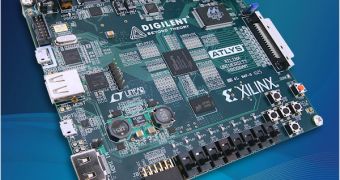Researchers from the Ruhr University in Germany came up with another great finding, this time managing to break Intel’s HDCP protection that was designed to prevent the copying of digital video and audio content while transferring across DP, DVI or HDMI.
H-Security reports that professor Tim Güneysu and his team managed to crack the protection by using a man-in-the-middle attack in which they placed a specially crafted circuit board between a Blu-Ray player and a display.
With the help of a PhD student, Güneysu managed to develop a piece of hardware by using a field programmable gate array (FPGA) from Diligent called Atlys.
The professor pointed out the fact that their proof of concept was not made to help bootleggers in their business, especially since it’s not practical for them due to the fact that the quantity of data obtained by placing the board between an HD disk player and a television set is too large.
In addition, receivers that can record HD content are already available and since they even offer compression methods, they’re much more efficient for those who want to copy Blu-ray disks.
“Our intention was rather to investigate the fundamental security of HDCP systems and to measure the actual financial outlay for a complete knockout. The fact that we were able to achieve this in the context of a PhD thesis and using materials costing just €200 ($268) is not a ringing endorsement of the security of the current HDCP system,” said Güneysu.
Even though their invention is a step forward in proving that any encryption can be broken, this is certainly not the first equipment that can intercept HD audio and video transfers. Others have succeeded a long time ago by obtaining receiver chips purposed for use in TV sets and monitors.

 14 DAY TRIAL //
14 DAY TRIAL //